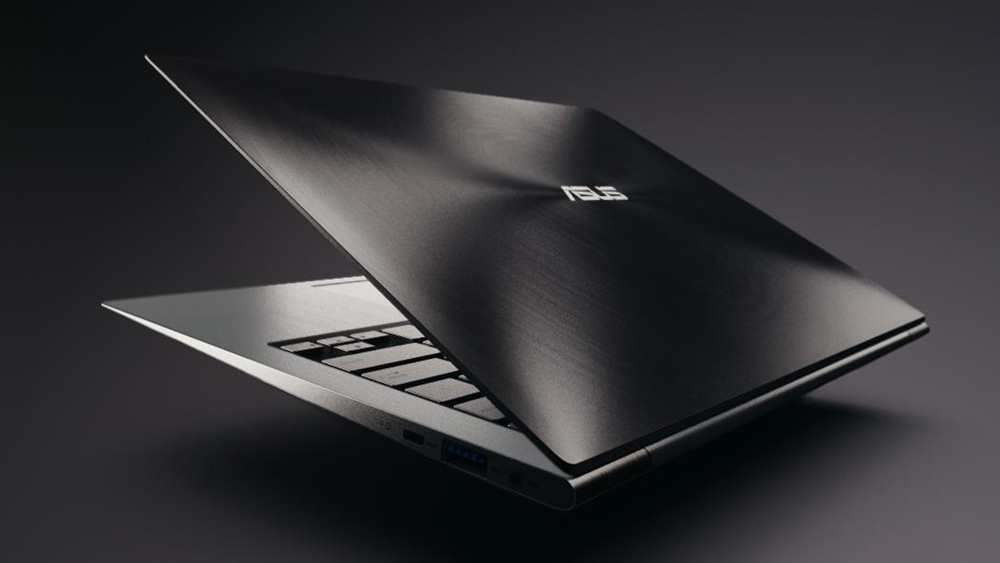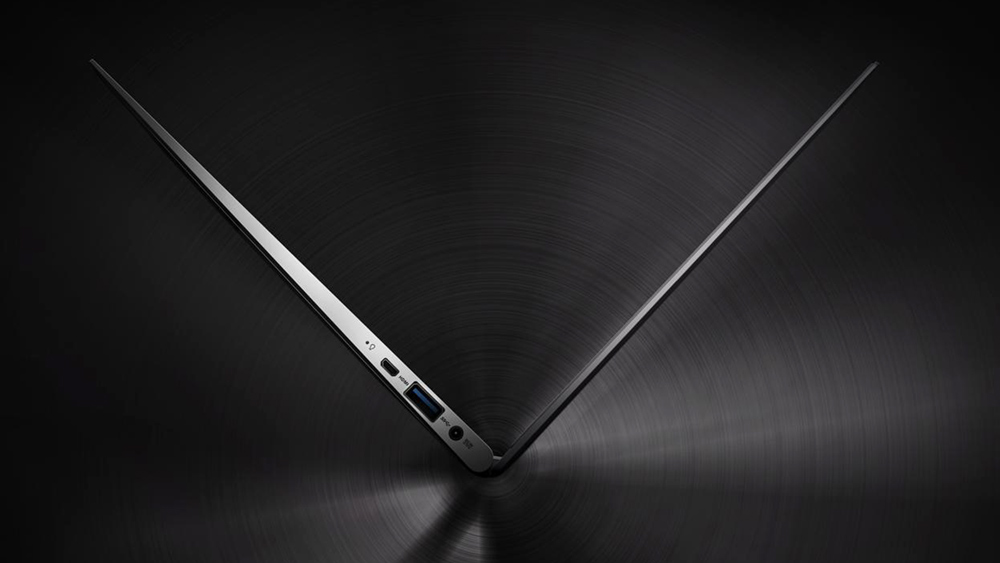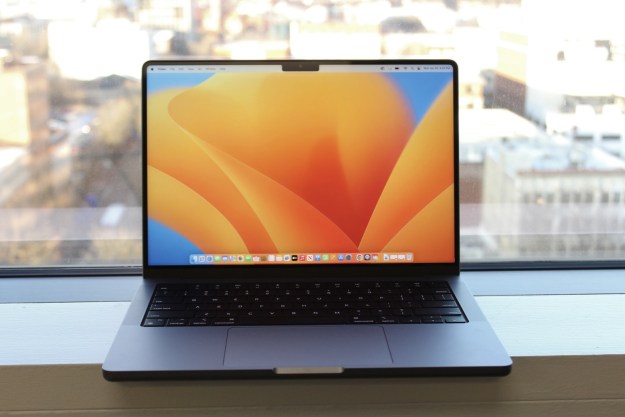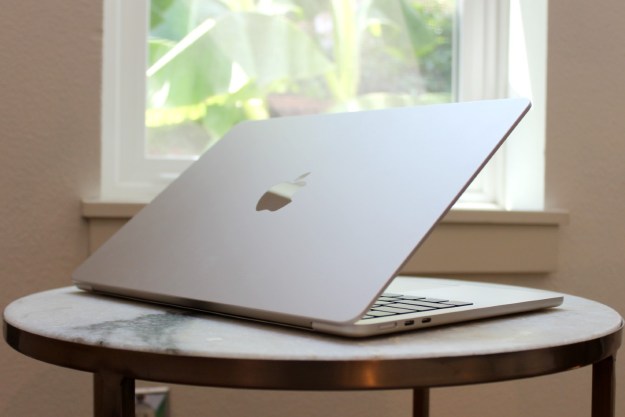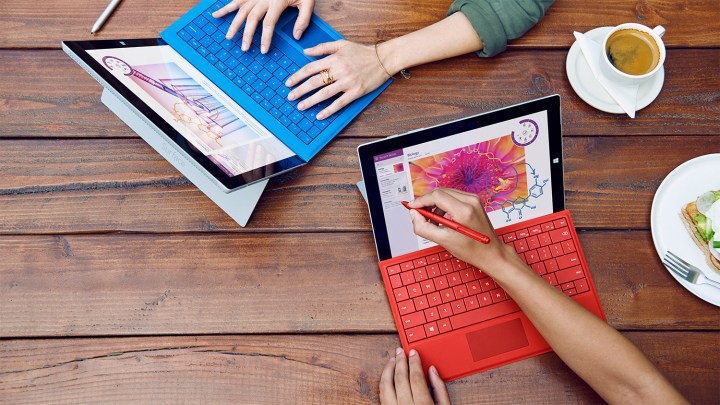
To my surprise, however, my experience with the MacBook Pro had spoiled me. I had no love for Apple’s software, but I was enamored with the excellent build quality and generally reliable performance of Apple’s hardware. And much to my chagrin, most Windows notebooks simply weren’t in the same class.
Older reviews of well-reviewed Windows notebooks often included a MacBook caveat.
They were almost uniformly bulky, made of cheap-feeling plastic, and often surprisingly heavy. They creaked when you lifted them, the keyboards were spongy and dipped when you pressed too hard, and the lids were often prone to random twisting. Even though Windows notebooks were generally thicker, they still managed to suffer from inferior battery life.
I was, to put it mildly, a bit disappointed.
After some deliberation and hand-wringing, I settled on an HP Envy 14 Beats Edition. It used a bit of metal in the chassis, it had a nice textured feel to the wrist rest, and it seemed to offer a relatively decent island keyboard with a reasonable amount of flex. At the same time — and this gave me some real cognitive dissonance — the machine still felt cheaply made compared to the MacBook Pro, its trackpad was atrocious, and its battery life was disappointing.
Little did I know; Windows laptops were about to get a lot better.
Intel’s Ultrabook initiative envisioned today’s 2-in-1 market
In 2011, Intel kicked off its Ultrabook initiative at Computex. It was aimed at creating a new generation of thinner, lighter notebooks with improved battery life. Intel was responding to the ever-increasing popularity of ARM-based smartphones and tablets, which Intel worried might shift users away from bulky
I spoke with Josh Newman, Intel product manager for the PC group with a focus on highly mobile devices, and he made It clear that Intel’s Ultrabook efforts were aimed at more than just prodding OEMs to make thinner and lighter notebooks. Instead, from the beginning, Intel envisioned a new class of extremely thin, light, and well-built Windows devices that would eventually morph into the 2-in-1 convertible machines that we see today.
“With the original Ultrabook journey, our end-state vision was actually what the 2-in-1 is today. We had concluded that the future notebook needed to have the utility of a tablet and the full functionality of a notebook,” Newman said.
Intel’s efforts covered the gamut from technical to marketing. Intel developed the low-power Ivy Bridge chipset, shared its expertise in making integrated circuits, pushed the development and integration of thinner components such as hard drives, and helped OEMs implement improved thermal designs. Intel also shared its copious research into touch and other usages with OEMs.
Virtually all Windows OEMs embraced the Ultrabook concept, and almost overnight the MacBook Air had competition.
Virtually all Windows OEMs embraced the Ultrabook concept, and almost overnight the MacBook Air was joined by a host of thin, light, and relatively long-lasting Windows notebook options. The Asus Zenbook UX31 was the first Ultrabook released — in fact it made its debut at Computex, alongside the Ultrabook specification itself.
Other OEMs joined in soon after. Dell introduced the first XPS 13 as an Ultrabook, a line that has evolved into one of the best Windows 10 notebooks on the market today. HP’s first Ultrabook was the Folio 13, and HP would later fully embrace the Ultrabook specs with the Envy and Spectre lines. Acer introduced the Aspire S3 as their initial Ultrabook offering, which as involved into the new, excellent Acer Swift series. And Lenovo took the idea a step further with the Yoga series, which is now represented by a wide variety of systems, including powerhouses like the Lenovo Yoga 910.
The new Ultrabooks were notably improved over previous Windows machines in ways other than being merely thinner and lighter. They were most often made of metal instead of plastic, they usually had improved keyboards and trackpads, and they offered significantly improved battery life. In short, Intel’s initiative completely altered the Windows notebook landscape, and for the better.
Microsoft Surface — showing OEMs how to do the new Windows the right way
Fast forward to June 2012. Microsoft was in the process of preparing for the rollout of Windows 8 later that year, in its own frantic response to smartphones and tablets. Then, Microsoft held an event in June 2012 where it did the unthinkable – it announced its own line of Windows hardware.
The Surface was a bold move, but also a necessary one. Windows 8 was truly different from earlier versions of Windows, representing an unapologetic response to the growing popularity of smartphones and tablets. Surface was light, made with rock-solid magnesium, looked great, and even had a built-in kickstand to make it useful on a desktop. Not coincidentally, Surface was also one of the first machines to represent Intel’s original Ultrabook vision of 2-in-1s that offered the best of both tablets and notebooks.
I asked Microsoft for some feedback, and the company responded rather generically. “It’s been in the Surface DNA since the beginning to make the best devices for getting stuff done. From the beginning, we pushed the envelope on what a device can be with our tablet that can replace your laptop. Successive generations of Surface have resonated with customers because they are designed to be powerful and versatile enough to do serious work and unlock amazing creativity.”
Over time, Surface became something of a surprise, I think, even to Microsoft. The Surface line caught on and became a bona fide profitable business of its own for Microsoft. In general, Surface has so far grabbed its own not-insignificant share of the high-end Windows PC market, and it serves as banner carrier for modern Windows 10 2-in1 devices.
Surface has grabbed its own, significant share of the high-end Windows PC market.
For all their grumbling, OEMs have responded to it. Just like Intel’s Ultrabook initiative, Surface compelled another round of innovation in the Windows market. With the Surface line leading the way, OEMs started churning out their own attractive, well-built, touch-centric or at least touch-friendly, Windows 10 2-in-1 devices.
Today’s 2-in-1 market is broken out between two basic kinds of machines. There’s the flip-around variety where the display can be swiveled 360 degrees to back up against the keyboard, while serving in tent and presentation modes along the way. Prominent examples of this style include Lenovo’s Yoga 910, Lenovo’s innovative Yoga Book, and HP’s excellent Spectre x360.
The other primary Windows 10 2-in-1 style is the detachable, of which Microsoft’s Surface Pro is perhaps the most iconic example. These machines are tablets first and foremost, and then accept detachable keyboards to turn them into notebook replacements. Some, again like the Surface Pro 4, support active digitizer pens that offer precise control for handwriting and drawing on the screen.
Related: Asus Transformer Pro 3 is an almost identical Surface Pro 4 knockoff
In many cases, OEMs are copying Microsoft more blatantly than Ultrabook manufacturers ever copied the MacBook Air. The Lenovo Miix series, for example, looks almost identical from 10 feet away. Obviously, Microsoft doesn’t mind – it’s clearly more than happy to see its OEMs making excellent 2-in-1 devices running Windows 10, even if they must steal from Surface to do it.

The Surface Pro line became particularly important to me. I made another foray into the market in early 2012 to find a machine to replace the HP Envy 14. I was exasperated with some performance and keyboard issues with the machine, and so I spent some time picking from the available Ultrabook options. I’m not the best example of the early success of the Ultrabook initiative, because I still couldn’t find a Windows notebook with a keyboard that was as good as Apple’s MacBook Air, and so that’s where I put my money.
The Surface Pro 3, however, pulled me back to Windows once again, and likely for good. Its combination of a 3:2 ratio, high-resolution display, and its much-improved Type Cover, convinced me that Windows 2-in-1s were the future, and I put my MacBook Air aside and picked up a Surface Pro 3 as soon as one was available in my local Microsoft Store. It was at that point that the Windows notebook transformation came full circle for me.
Even Apple is innovating again
The bottom line for PC manufacturers is that nobody can afford to make low-quality machines. The PC market continues to decline, with each quarter bringing mostly bad news in terms of fewer and fewer units being sold. Smartphones and tablets have indeed cut into PC sales, and it’s looking like it might be some time before the market improves, if ever.
It’s unclear if Ultrabook and Surface did anything to slow down the PC’s decline, but I’m inclined to think so. I’m guessing that the PC market would find itself on a march to obsolescence if the same bulky, low-quality Windows machines were still competing with today’s cutting-edge tablets. The Ultrabook and Surface did exactly what they were intended to do. They set a high mark for quality that everyone else had to leap.
Related: HP Spectre x360 is perhaps the best Windows 10 2-in-1 and overall notebook
As I reflect on my search for a Windows notebook in 2010 and then survey the market today, I’m frankly amazed at the number of excellent Windows 10 machines available. You don’t have to give up an arm and a leg to get a very good Windows notebook, and if you’re willing to spend over $1,000, you have your pick of world-class machines that can last all day on a single charge.
The OEMs deserve some credit for making so many great options, but we have Intel and Microsoft to thank for pushing them along.
Editors' Recommendations
- These 6 tweaks take MacBooks from great to nearly perfect
- 5 laptops you should buy instead of the M2 MacBook Air
- The biggest threat to the MacBook this year might come from Apple itself
- The case for buying the M2 MacBook Air over the M3 model
- How Intel and Microsoft are teaming up to take on Apple
